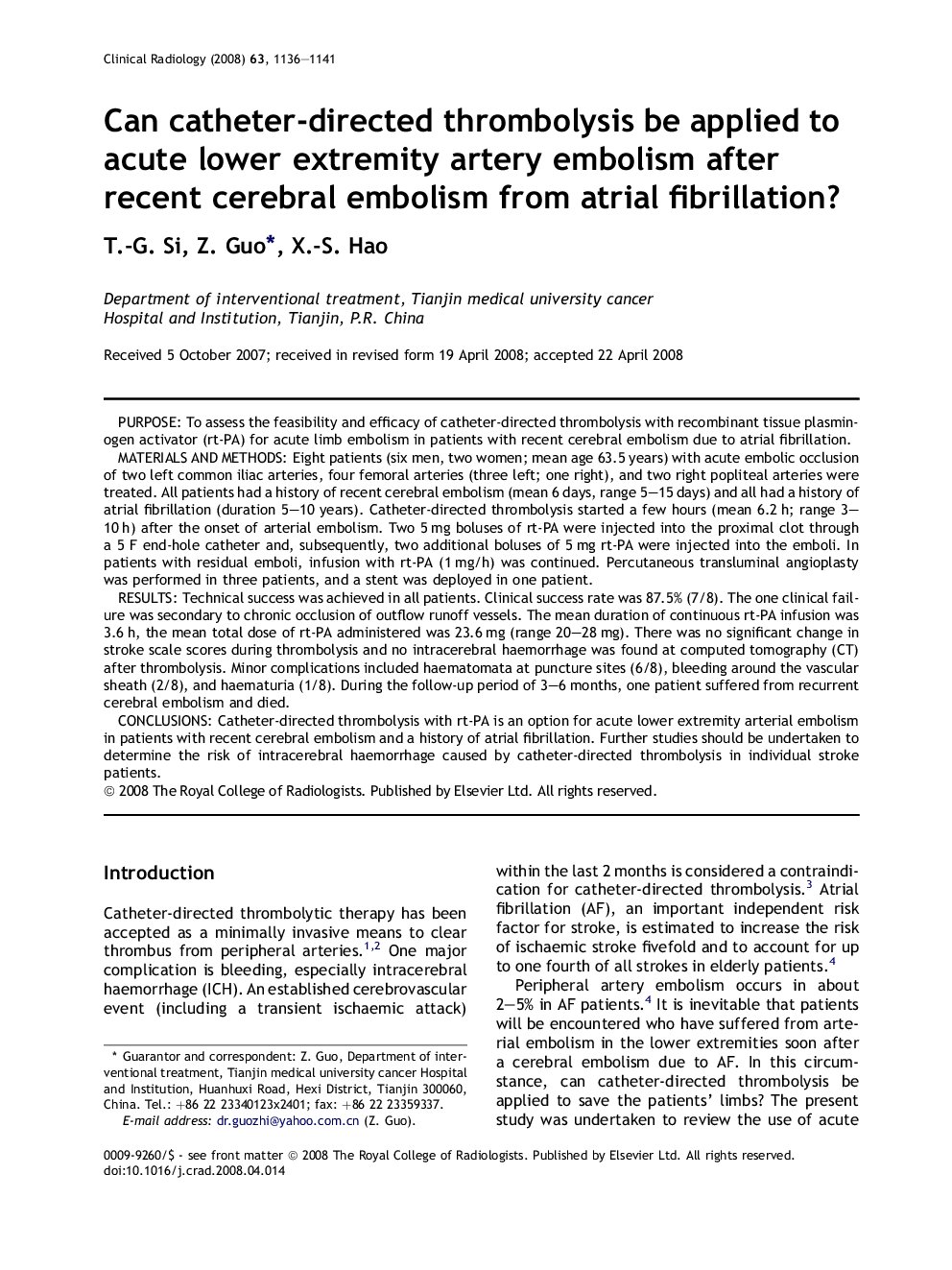| Article ID | Journal | Published Year | Pages | File Type |
|---|---|---|---|---|
| 3984272 | Clinical Radiology | 2008 | 6 Pages |
PurposeTo assess the feasibility and efficacy of catheter-directed thrombolysis with recombinant tissue plasminogen activator (rt-PA) for acute limb embolism in patients with recent cerebral embolism due to atrial fibrillation.Materials and methodsEight patients (six men, two women; mean age 63.5 years) with acute embolic occlusion of two left common iliac arteries, four femoral arteries (three left; one right), and two right popliteal arteries were treated. All patients had a history of recent cerebral embolism (mean 6 days, range 5–15 days) and all had a history of atrial fibrillation (duration 5–10 years). Catheter-directed thrombolysis started a few hours (mean 6.2 h; range 3–10 h) after the onset of arterial embolism. Two 5 mg boluses of rt-PA were injected into the proximal clot through a 5 F end-hole catheter and, subsequently, two additional boluses of 5 mg rt-PA were injected into the emboli. In patients with residual emboli, infusion with rt-PA (1 mg/h) was continued. Percutaneous transluminal angioplasty was performed in three patients, and a stent was deployed in one patient.ResultsTechnical success was achieved in all patients. Clinical success rate was 87.5% (7/8). The one clinical failure was secondary to chronic occlusion of outflow runoff vessels. The mean duration of continuous rt-PA infusion was 3.6 h, the mean total dose of rt-PA administered was 23.6 mg (range 20–28 mg). There was no significant change in stroke scale scores during thrombolysis and no intracerebral haemorrhage was found at computed tomography (CT) after thrombolysis. Minor complications included haematomata at puncture sites (6/8), bleeding around the vascular sheath (2/8), and haematuria (1/8). During the follow-up period of 3–6 months, one patient suffered from recurrent cerebral embolism and died.ConclusionsCatheter-directed thrombolysis with rt-PA is an option for acute lower extremity arterial embolism in patients with recent cerebral embolism and a history of atrial fibrillation. Further studies should be undertaken to determine the risk of intracerebral haemorrhage caused by catheter-directed thrombolysis in individual stroke patients.
